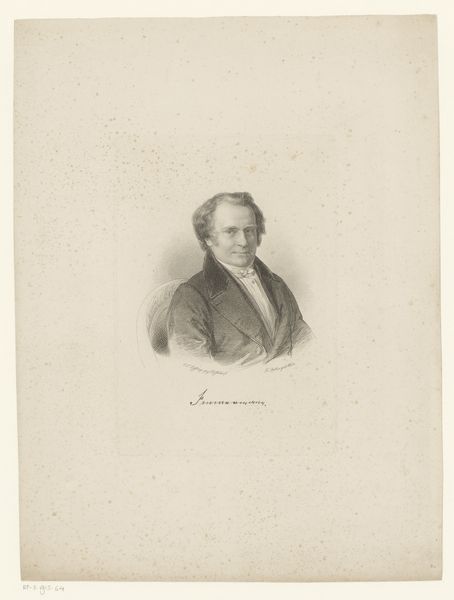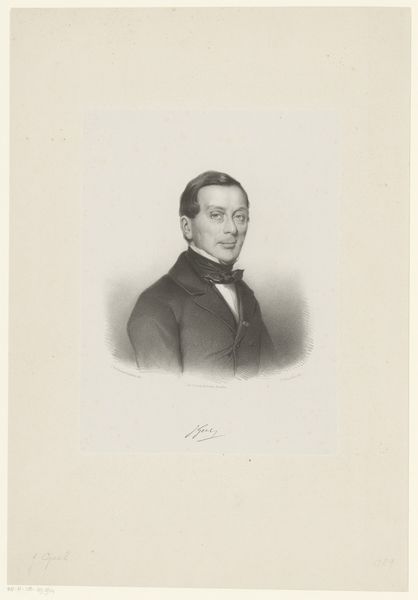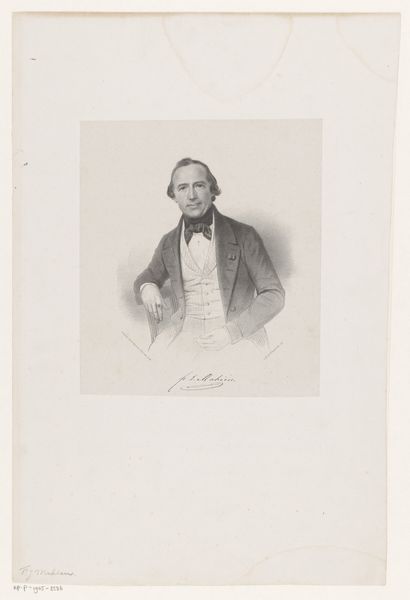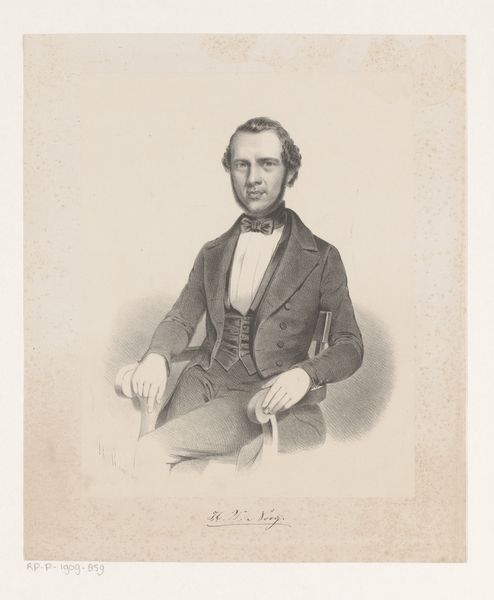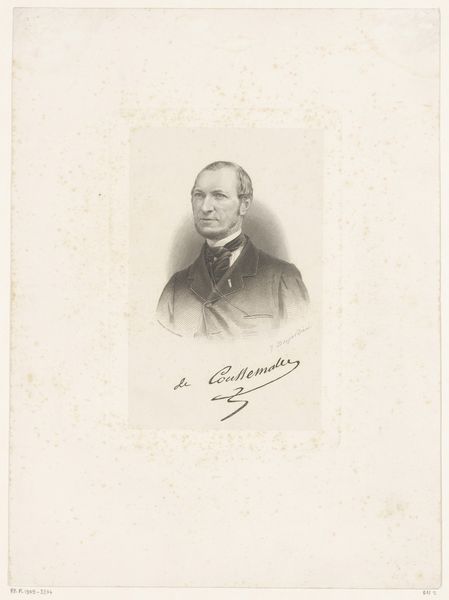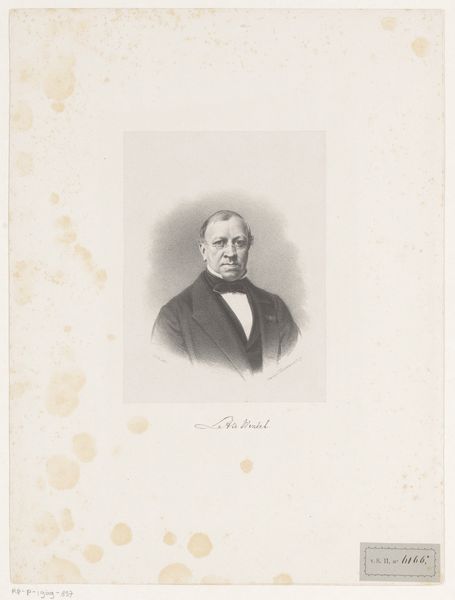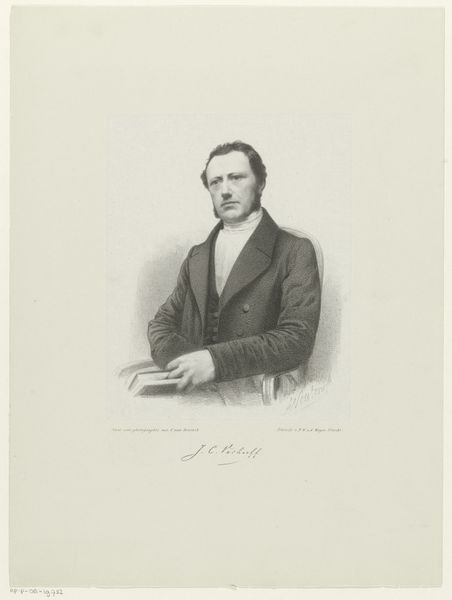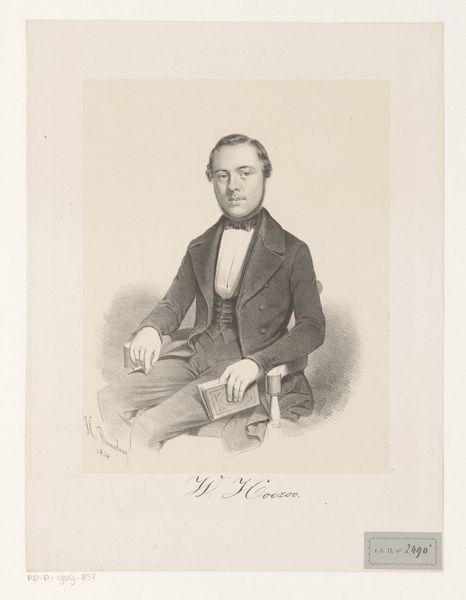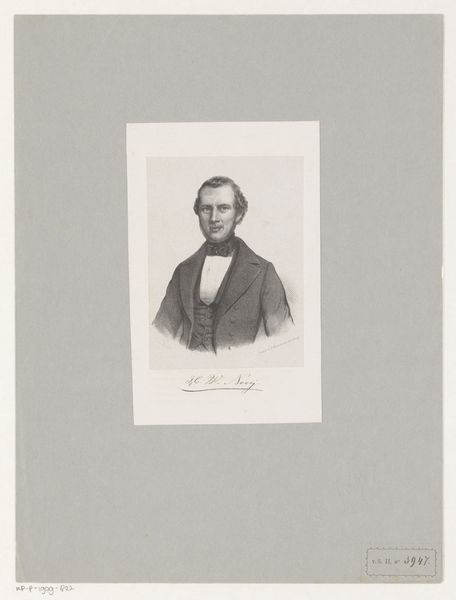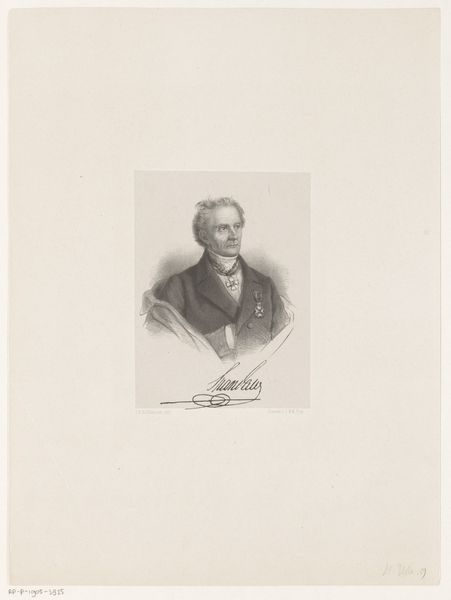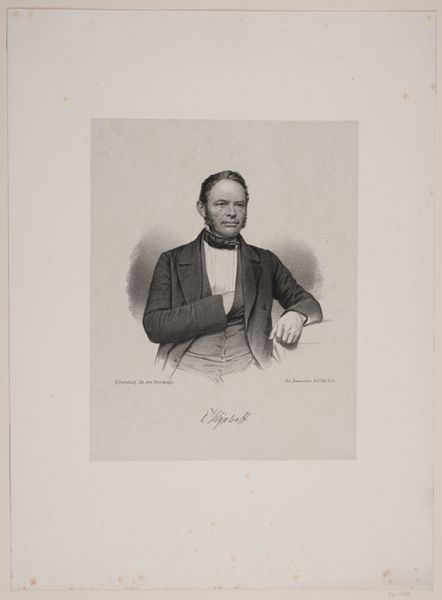
drawing, print
#
portrait
#
drawing
# print
#
portrait drawing
#
history-painting
#
realism
Dimensions: height 485 mm, width 355 mm
Copyright: Rijks Museum: Open Domain
Curator: It has a certain severity to it, doesn’t it? I am thinking particularly of the stark monochrome print and how that lends an almost imposing quality. Editor: Indeed. Let’s consider "Portret van C. Bahnsen" from 1868. The artist here, Anthony Grolman, gives us a portrait in the form of a drawing and a print. What we're seeing, materially, is the convergence of drawing techniques reproduced en masse through printing technologies. Curator: Interesting point. Thinking about the context in which this was created: How did these readily reproducible prints shape the image, literally and figuratively, of important figures? Were such images aimed at the democratization of the Dutch elite? Editor: Precisely. This print serves not only as a means to circulate the likeness of Bahnsen. The widespread dissemination of portrait prints such as this can reflect the public's increasing interest in prominent figures, thereby enhancing the prestige of the portrait's subject. What are your thoughts on Grolman's particular choice of monochrome here? Curator: It definitely contributes to a certain formality. But consider this too. The restricted tonal range almost throws the focus on the skillful execution of hatching, stippling – almost as if to parade the craftsmanship involved in rendering different textures and light. A lot of hand labor went into its creation. Editor: You’re right to draw attention to the labor aspect. These prints, despite their relative affordability, still represent skilled artistry and craft. But let’s also recognize that this very accessibility opened up avenues to project and solidify a public figure’s stature beyond their immediate circle. Curator: It makes you consider, doesn't it? Even in the era before photography dominated portraiture, how accessible images contributed to the narratives we create around public figures. Editor: Exactly. It's a fascinating interplay between artistry, material production, and the construction of historical narratives. Curator: Yes, it is also a solid reminder of how closely the means of image production is linked to shaping perceptions, even now.
Comments
No comments
Be the first to comment and join the conversation on the ultimate creative platform.
